An Overview of the Quilting Used on T-shirt Quilts
Updated: July 15th, 2024 | Published: August 8th, 2022
2 min. read
By Andrea Funk
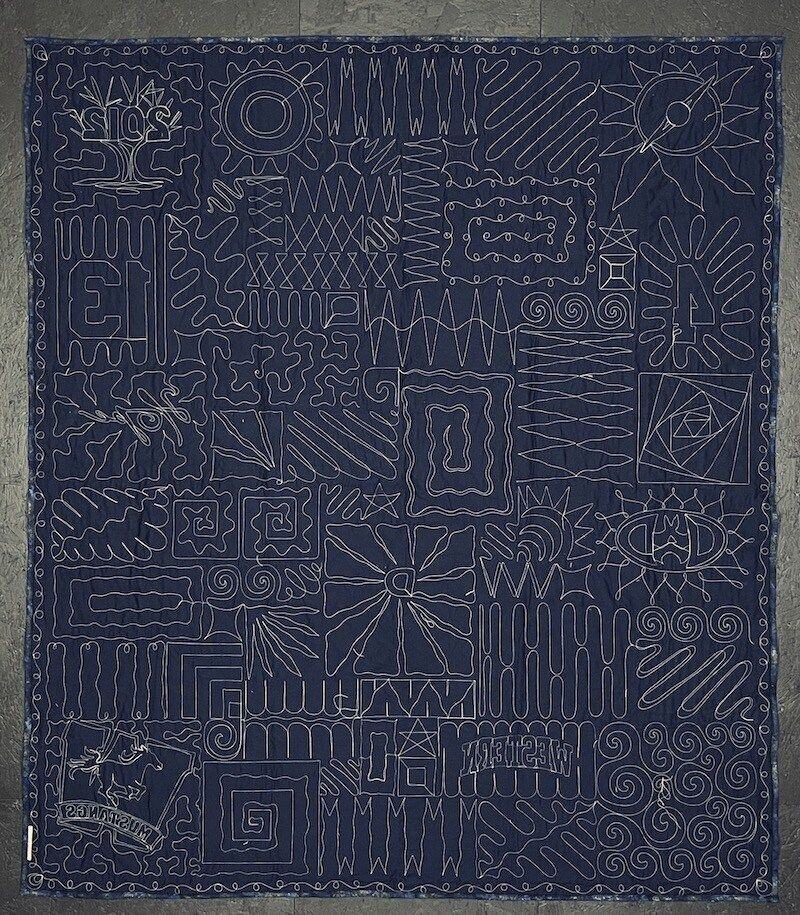
Long-arm machine quilting is how most quilt makers finish their T-shirt quilts. There are a two basic style a quilt maker can choose from:
-
An over-all quilting pattern over the entire quilt. This is done with either with a computerized machine that runs by itself or by a quilter tracing a repetitive design by hand.
-
A unique pattern for each block. This is drawn by an artist standing at the front of a quilting machine - see the video below.
In this article we will study the unique pattern style of long-arm quilt. It's the type of quilting we do.
Here's a video of Milie quilting an all-dinosaur T-shirt quilt.
Unique Pattern In Depth
 Here at Too Cool T-shirt Quilts, all of our quilts are quilted with a unique design for each block. Some blocks within a quilt will be quilted with a design and other blocks will have what's on the front traced so it can be seen from the back.
Here at Too Cool T-shirt Quilts, all of our quilts are quilted with a unique design for each block. Some blocks within a quilt will be quilted with a design and other blocks will have what's on the front traced so it can be seen from the back.
On every quilt we trace number of designs. Some quilts end up with more traced items than others. It depends what’s on the quilt. Here is a quick breakdown of what goes though our mind when we am deciding what to trace, or what not to trace.
Design Size
The design may be the coolest image ever been printed on a T-shirt, but it is not worth tracing if its so small the quilting won’t look like anything on the back. We shy away tracing anything on blocks smaller than eight inches by eight inches. And if there is a really huge shirt with a good design on it we usually trace it.
Design
One rule that we tend to follow is ‘keep it simple’. If the design has so many details that are really small we try to avoid it. But if there is great line drawing we can replicate well and is big enough, we go for it. A great example of this is Jazz base player T-shirt. He is simply drawn, doesn't have tiny little details, and is on a large block
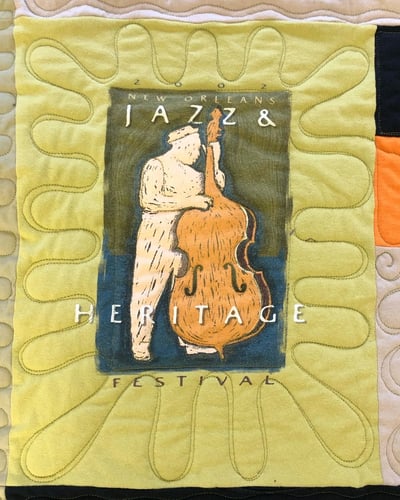
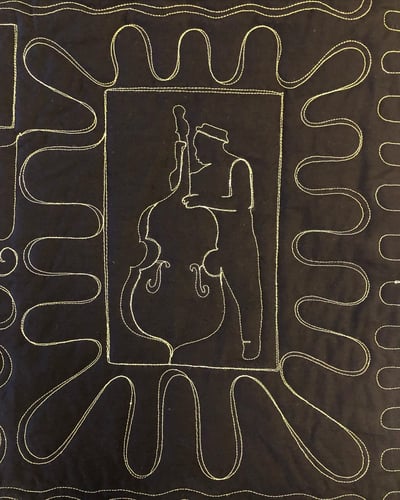
Placement
 If there is something that is right next to something we already traced, and it too is cool to trace, we usually trace that as well. But if there is a third or a fourth image also right next to the other traced images, and that look good to trace, its time to weigh our options and pick two. Having too many things traced in one place becomes distracting.
If there is something that is right next to something we already traced, and it too is cool to trace, we usually trace that as well. But if there is a third or a fourth image also right next to the other traced images, and that look good to trace, its time to weigh our options and pick two. Having too many things traced in one place becomes distracting.
Things We Usually Trace
There are a few things that we typically trace: Greek letters, huge letters and numbers on jerseys, and last names, just to name a few. Also, there are some shirts that don’t really give us any other option than to trace what is on it – again our Jazz base player example.
Things We Rarely Trace
If there is a very thick embroidery or layering of fabrics on a block, we will avoid doing a tracing on that block. For example, some hockey jerseys are really thick and have many different layers and embroidery. Many times our machine can’t quilt on the design at all because it’s just too thick. In these cases we do as little quilting as we can get away with on the block.
Words
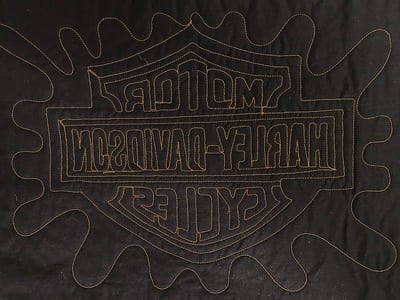 Sometimes a quilt will have lack of images to traced because the designs on the shirts don’t lend themselves well to tracing. In this case we turn to words. Many shirts have a large grouping of words that can be traced easily enough to make up for the lack of other designs within the quilt. But note, the words will show up backwards on the back of the quilt!
Sometimes a quilt will have lack of images to traced because the designs on the shirts don’t lend themselves well to tracing. In this case we turn to words. Many shirts have a large grouping of words that can be traced easily enough to make up for the lack of other designs within the quilt. But note, the words will show up backwards on the back of the quilt!
When we first started quilting we had to think about what we wanted to trace and what we didn’t. As time went along we became better and faster at making these choices. Now we rarely have to stop and think about what we are going to trace, it has become an unconscious act.
We hope this quick breakdown has helped you understand why some things on your quilt were traced and others were not.
Planning a T-shirt quilt?
Here are step-by-step directions for ordering your Too Cool T-shirt quilt.
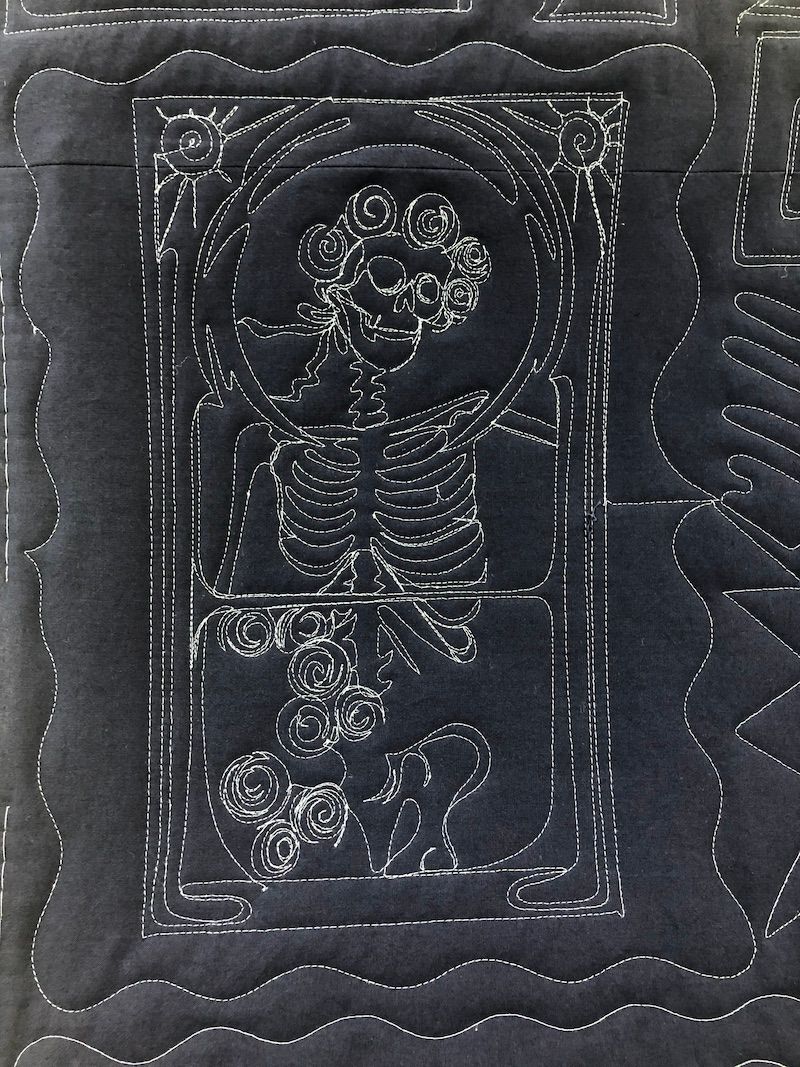
![]()
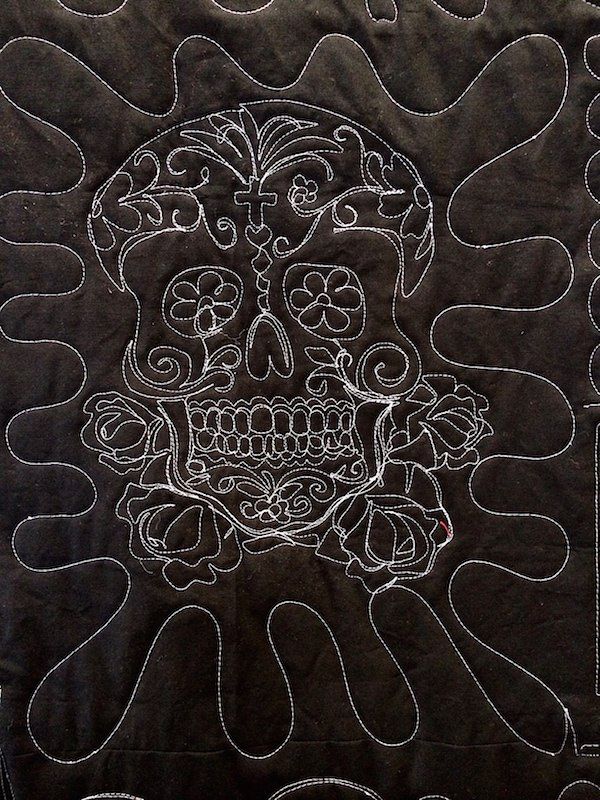
In 1992, Andrea Funk set out to reinvent the T-shirt quilt—and did. She pioneered the use of multi-size blocks and went on to develop six additional quilt styles, establishing Too Cool T-shirt Quilts as the creative engine behind the modern T-shirt quilt movement.

